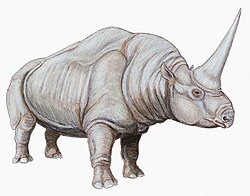| Neohipparion | |
|---|---|
 | |
| Skeleton of N. leptode at the Natural History Museum of Los Angeles County | |
| Scientific classification | |
| Kingdom: | Animalia |
| Phylum: | Chordata |
| Class: | Mammalia |
| Order: | Perissodactyla |
| Family: | Equidae |
| Subfamily: | Equinae |
| Tribe: | † Hipparionini |
| Genus: | † Neohipparion Gidley, 1903 |
| Type species | |
| Neohipparion affine (Leidy, 1869) | |
| Species | |
| |
| Synonyms | |
| |


Neohipparion (Greek: "new" (neos), "pony" (hipparion) [1] ) is an extinct genus of equid, from the Neogene (Miocene to Pliocene) of North America and Central America. [2] [3] [4]








